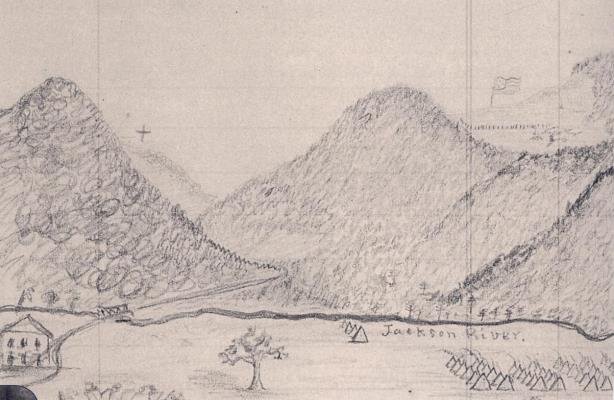
The Battle of McDowell
May 8, 1862
“God blessed our arms with victory at McDowell yesterday.”
Sketch of Sitlington’s Hill
The Battle of McDowell was the first Confederate victory during Stonewall Jackson’s 1862 Shenandoah Valley Campaign. It relieved pressure on Richmond and saved the "Breadbasket of the Confederacy”. As part of the Federal campaign to capture the Shenandoah Valley in 1862, Federal Gens. Milroy and Schenck moved eastward to threaten the Valley from what is now West Virginia. In response, Gen. Jackson cleverly deceived the Federals by marching out of the east Valley towards Richmond and then returning his army to the Valley by rail to Staunton. He then quickly marched westward along the Staunton and Parkersburg Turnpike toward McDowell.
Late in the afternoon of May 8, Jackson took up positions along Sitlington’s Hill. Despite being heavily outnumbered, Milroy seized the initiative and assaulted the Confederate position. After four hours of extremely fierce fighting, the Federals were repulsed.
Milroy and Schenck created the ruse of bivouacking for the night, then quietly withdrew into West Virginia. Jackson was now free to operate against other Federal forces in the Valley—a key to his success in this campaign. Jackson’s incredible bluff, pretending to move east but actually moving west, was a masterpiece of maneuver, deception and audacity.





